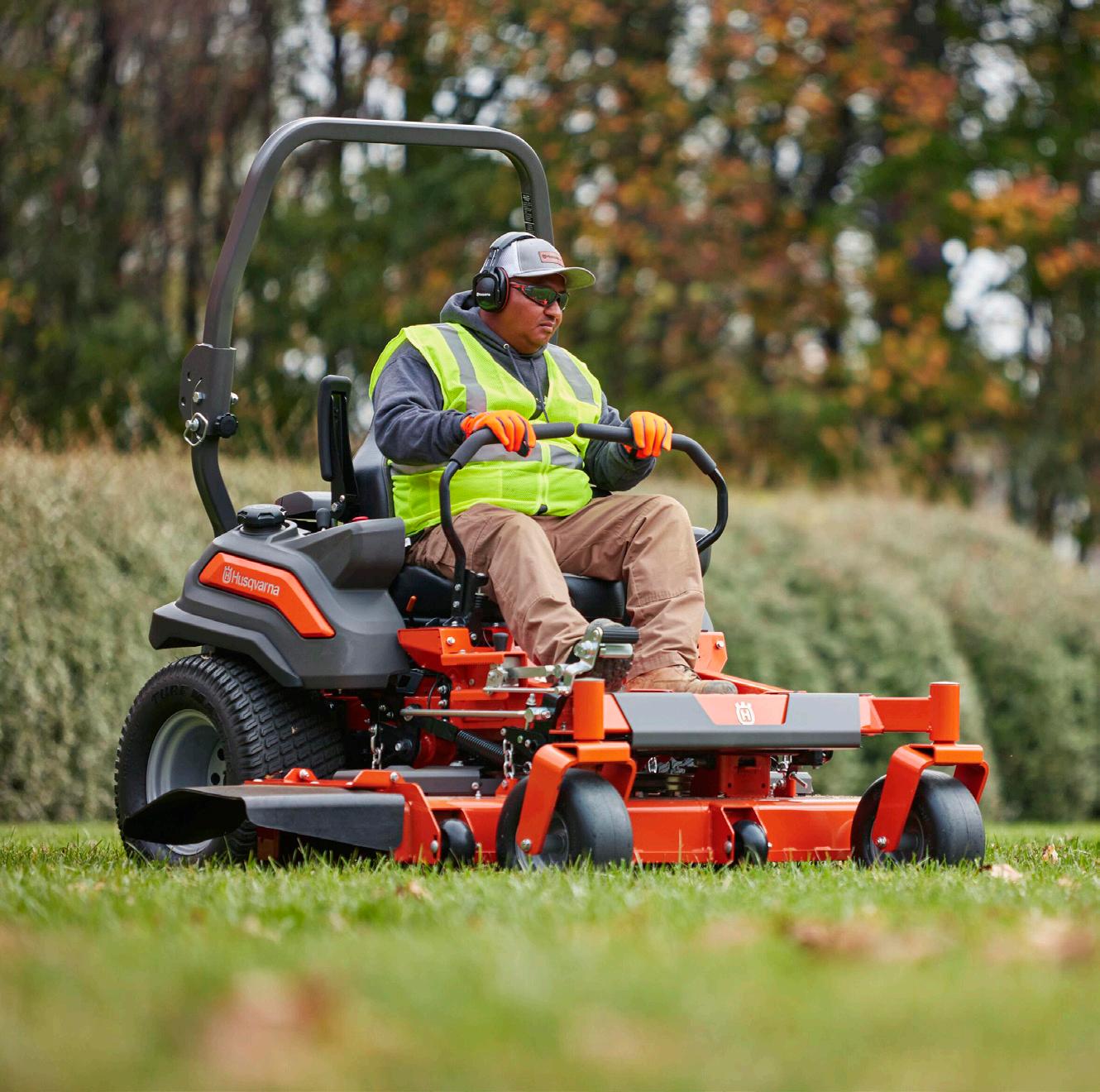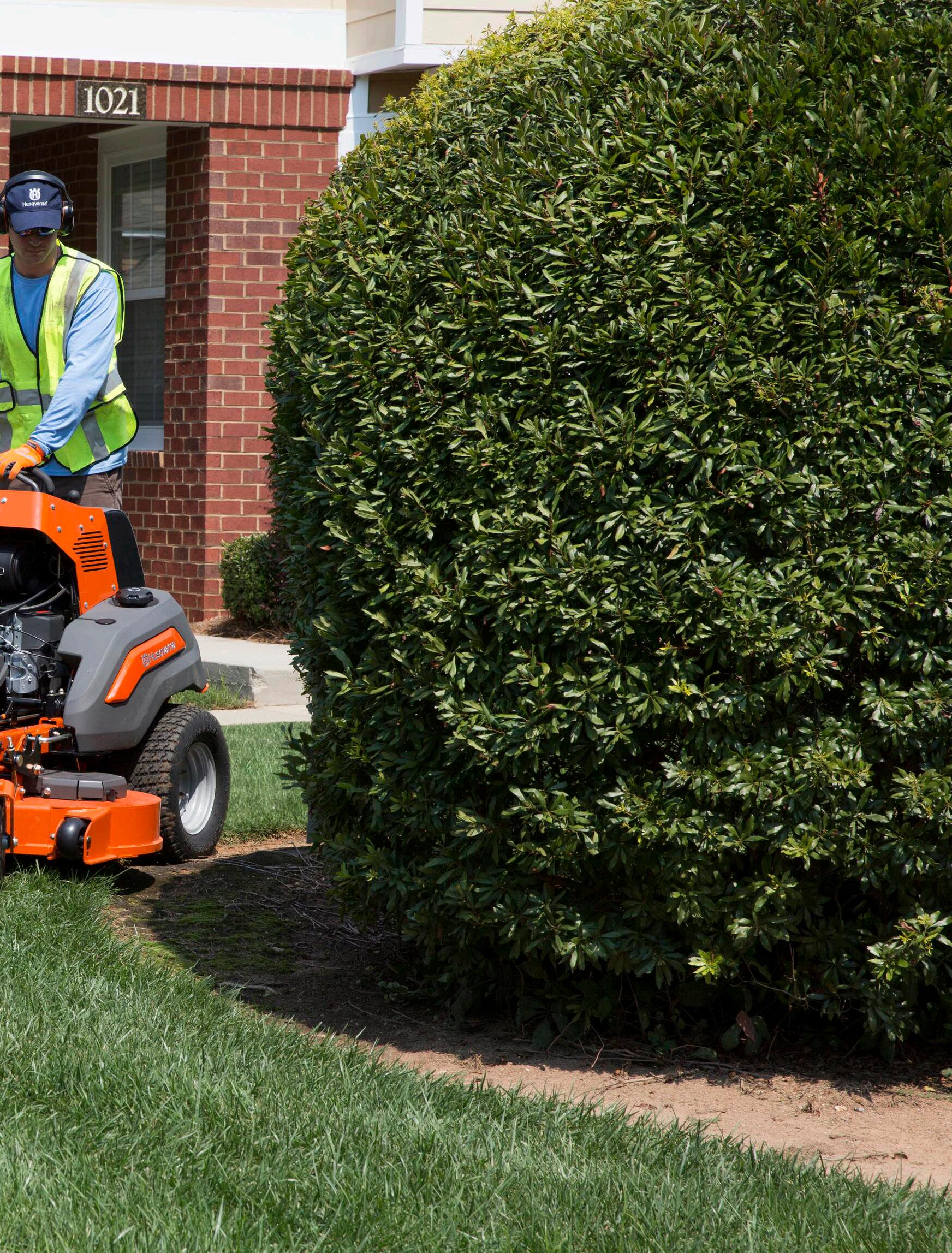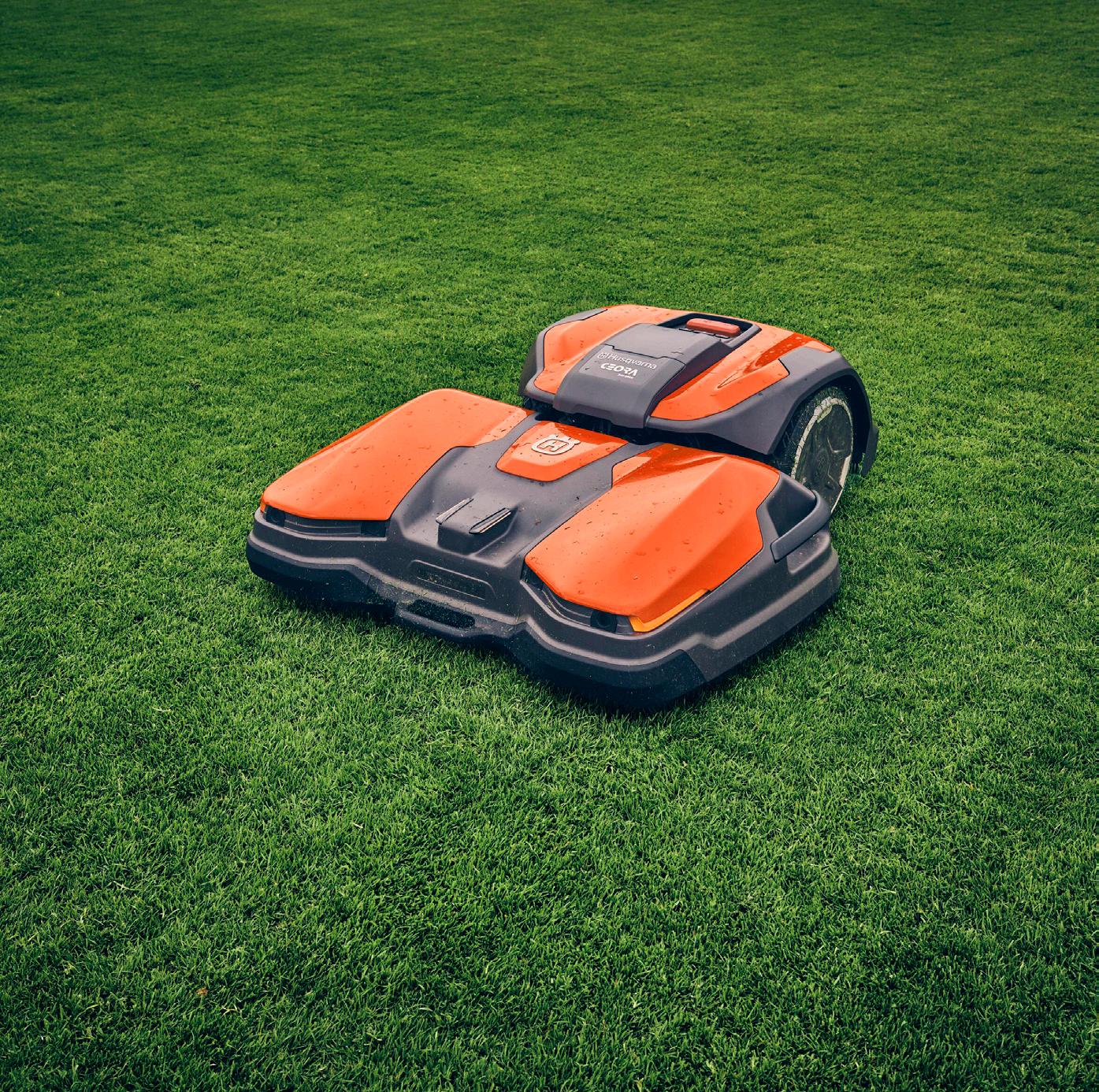
5 minute read
MOW ON
operated equipment to their trucks.”
Quiet operation and no emissions are among the benefits of batterypowered equipment for customers, according to Gerry Barnaby, senior director of excitement at Ego.
Advertisement
“Quiet landscape maintenance is something on the mind of lots of consumers,” Barnaby says. “With COVID, a lot of people were working from home just to realize how loud landscape machinery can be if it’s gas powered. When commercial landscapers can quiet down their operation, they can work longer hours, and they can work in different environments more effectively, like around hospitals, schools and offices.”
Barnaby adds that for certain accounts, landscape companies may have an advantage over others in their area if they use battery-powered equipment.
“If a landscaper is in competition for an account, they can come in and say ‘we’re being quiet and eco-friendly,’” Barnaby says. “Then, if you’ve got a number of properties in close proximity, you can shorten your travel time without killing your profit. That makes battery power even more efficient and sellable.”
Lower vibration, noise and emissions levels are also beneficial for crew members, Buxton says.
“Benefits include the elimination of gas headaches, and with the mowers creating substantially lower noise output than gas engines, operators are able to start work earlier and decrease their exposure to continuous high noise levels, simultaneously improving safety and efficiency,” Buxton says.
“With a simple push-button start, battery-powered equipment eliminates the time it takes to pull start a gas engine, a common frustration and time consumer on the job. Removing the need for engine maintenance, battery-operated equipment frees users from the responsibilities of replacing spark plugs, recoil starters, air filters and carburetors.” example, California recently passed legislation banning the sale of new gas-powered equipment starting in 2024. It will require new small offroad engines, typically found in lawn, garden and other outdoor power equipment, to be zero emissions and ban the sale of all gas-powered equipment with the model year 2024 and later.
Increased regulations focused on reduced noise and emissions are another reason the industry started to look more toward batteryoperated mowers, Buxton says.
“While this legislation is specific to
California, these laws are expected to gain momentum in other regions and states in the near future, encouraging businesses to begin the transition to battery-operated mowers to follow local restrictions,” Buxton says.

With that in mind, Barnaby says states on the East and Wests Coasts have been early adopters of battery power.
“Depending on where you live, places like California will subsidize you to buy battery-powered equipment,” Barnaby says. “You can always check with your local environmental agencies to see if you have anything in your state. Just buy one set of gear and see if it works for you.”
As the market shifts toward electrification, David Cluka, vice president of sales and marketing at Briggs & Stratton, says the industry needs to reimagine service and support for the machines.
“There are no more engines with crankshafts or carburetors that may need to be repaired or replaced, no more deck belts to replace. Instead, there are motor controllers and software that may need to be updated,” Cluka says. “As a manufacturer of these products, we need to make sure we properly educate our service teams so they can support our dealers. We also need to equip our dealers with the training and tools to diagnose and repair these products when they come in for service quickly and correctly.”
Mow more
Further adding to the efficiency push, many mowers now include higher horsepower and larger cutting decks.
“With the lack of workers and trying to get work done quicker, landscapers can now get the same work done in a shorter period of time,” says Sean Dwyer, global product manager, commercial wheeled product at Husqvarna Group. “I noticed the increase in productivity features as the number of workers started to decrease in the last couple of years. Products used to have 30 horsepower (hp) and 60-inch cutting decks, and now you’re seeing up to 40 hp. It might seem like overkill, but if you can cut the grass a mile an hour faster, that can also be quick enough to be 15 percent faster.”
Dwyer adds that landscape professionals in areas like the Midwest and parts of Texas have been keen to adopt the larger, more powerful mowers because in some cases, they cover big swaths of land.
As another way to keep crews happier and more productive, mower manufacturers have also included ergonomic features such as padded seats and intuitive, easyto-reach controls.
“A lot of that stems from ‘how do I keep the workers that I have? Or how do I entice workers?’ If you’re going to put them on something uncomfortable versus put them on something comfortable, that does, in fact, have some bearing,” Dwyer says.
Autonomous features
Autonomous and semiautonomous mowers have gained traction as a trending topic in the landscaping industry, Griffith says.
“This technology empowers landscapers to do more with less through maximizing efficiency and minimizing operator training,” Griffith says. “However, few businesses will have the opportunity to add fully autonomous and robotic mowers to their fleet in 2023. Fortunately, semiautonomous mowers are available to landscapers who are looking to benefit from autonomous technology today. Utilizing highprecision GPS technology, these types of mowers are designed to help minimize overlap and cut straight stripes.”

Charles Quinn, co-founder and CEO at Greenzie, agrees that robotic technology can help landscape doesn’t control the engines, but it does control the autonomous operation.”
What to keep in mind
For landscapers thinking of making the leap to new technologies, Dwyer notes that companies should start small to see if it’s right for their company and stick with one brand.
“A lot of this stuff seems to start with a lot of buzz, but then as reality comes in, it’s ‘how can I manage this? How can we do this?’ That’s when you start seeing the real cream rise to the top. New technology will accelerate because of how impactful it is today, and it’s not totally outside the paradigm they’re used to.” companies in various ways, such as by alleviating the labor crisis.
For battery-powered equipment, run time concerns come up frequently among landscapers hesitant to adopt the technology.
“In the mind of the landscape professional, run time is everything,” Barnaby says.
Greenzie is a software that powers autonomous mowers.
“We use robotic equipment to take job openings, not jobs, and we reduce their crew so that they can do more with less equipment,” Quinn says.
“We focus primarily on software that makes landscapers more efficient. The software is the brains of some of the autonomous operation. It
“Obviously, with gas, you can just bring the truck over replenish the supply, whereas with battery power, you either have to recharge the battery or invest enough to have another charged battery to get through your day, but think of the money you pay for gas and the time spent when you’re having to go to the gas station and wasting time on the clock. You can have the batteries ready to go before you leave the shop.”
Dan Stibral, product training specialist at Bobcat Mowers, adds that battery life can depend on a variety of factors.
“What we’re seeing is that battery life varies depending on the grass conditions, but overall, we’re seeing upward of eight to 10 hours in the field,” Stibral says.
He adds that slower mowing during shoulder seasons can also










